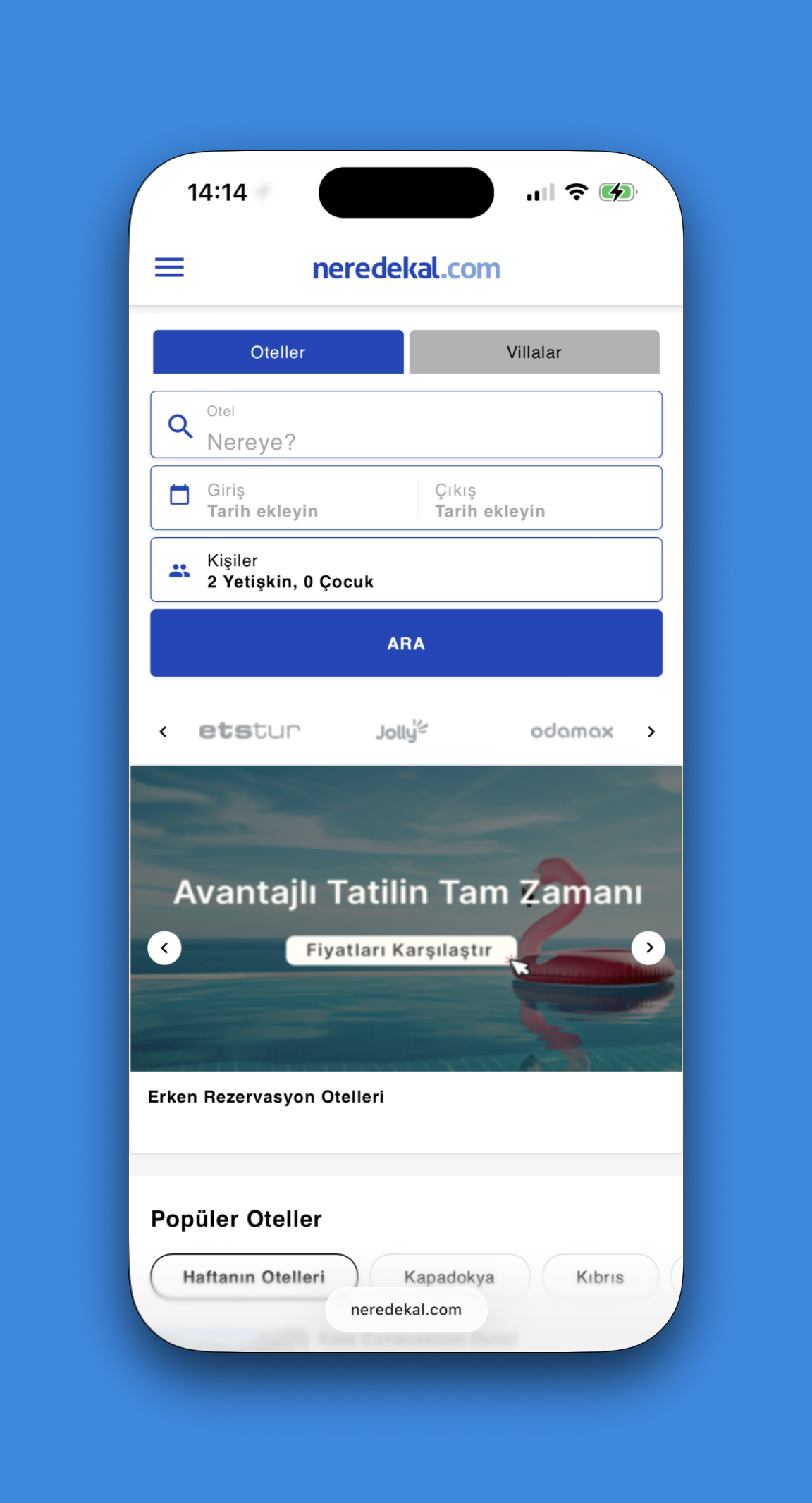Neredekal
Neredekal
Neredekal reinvented itself by hot-swapping a sluggish monolith for a micro-frontend engine, slicing mobile load times to two seconds and driving a double-digit booking lift, all financed by commissions that feel fair to hotels and painless to travellers.
Neredekal: End-to-End Case Study
1. Market gap and product vision
Neredekal started as Turkey’s largest stay-search directory but was shackled by a PHP monolith that loaded like dial-up on mobile. The new mandate: keep the site live while swapping its engine for a lightning React micro-frontend stack. Goal number one was speed, because in travel half a second of lag equals booking abandonment.
2. Dual-sided value realised
Travellers now type “Fethiye boutique hotel with pool,” see real-time inventory, and lock a room in two screens, paying in lira or euros without FX shock.
Partners watch empty weekdays fill up, enjoy instant payout minus a predictable commission, and get segment-level analytics they never had. Early KPIs: first-paint dropped to 2.1 seconds, organic sessions rose eighteen percent, and mobile conversions climbed twelve percent within eight weeks of the cut-over.
3. Business model and unit economics
Revenue flows from an average twelve percent booking commission plus a modest fee for premium placement in “Top Picks” carousels. New dynamic ad slots let hotels boost shoulder-season occupancy. Server costs rose temporarily during the dual-stack phase but settled ten percent below original once micro-frontends moved to a regional CDN.
4. Technical and design overhaul
Micro-frontends sliced the monolith into deploy-anytime feature pods, each built with React and stitched by a single-SPA router — a pattern proven to scale safely in 2025.(Medium
API-first backend now exposes GraphQL so mobile, web, and partner widgets pull the same canonical data.
Image optimisation pipeline converts every hero photo to AVIF on the fly, slashing page weight without harming glossy hotel shots.
UX refresh dropped the booking flow from five steps to two, added sticky price bars, and inlined trust signals (rating, free-cancellation badge) right beside the CTA.
5. Growth experiments worth noting
• A “nearby hidden gem” push at 5 p.m. lifted same-day bookings twenty-one percent.
• Replacing “Enquire” with “Book instantly” on partner properties converted browsing into buying by two points.
• A loyalty pilot that gifts a tenth-night discount showed promise but cannibalised premium suites; iteration underway.
6. Risks and mitigation
Seasonal traffic spikes could stress the new GraphQL layer, so autoscaling thresholds were widened before summer. Google core update volatility is hedged with schema-rich snippets and a fresh sitemap dispatched nightly. Currency swings are dampened via mid-market FX refreshes every hour to keep checkout totals trustworthy.
7. Executive takeaways
Neredekal’s gutsy live migration from monolith to micro-frontends cut load times in half, juiced SEO traffic, and bumped mobile bookings without blowing the budget.
Pain points were real — parallel hosting costs and potential SEO cliff-drops — yet tight sprint cadences and milestone-gated freelancing held the line.
Next quarter the team will layer on itinerary bundling and host-side revenue tools to turn speed gains into sustained market share.



